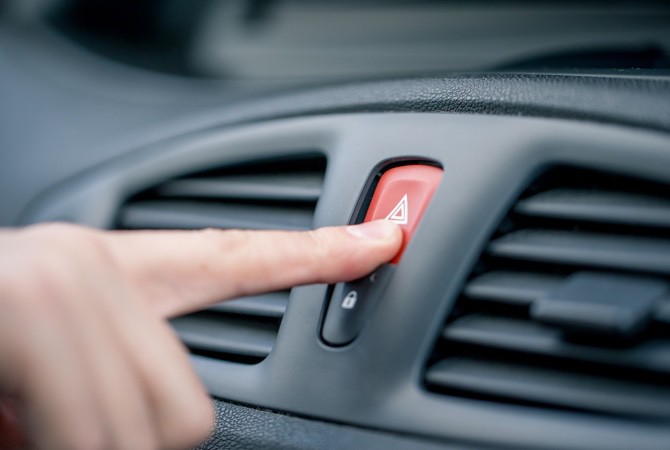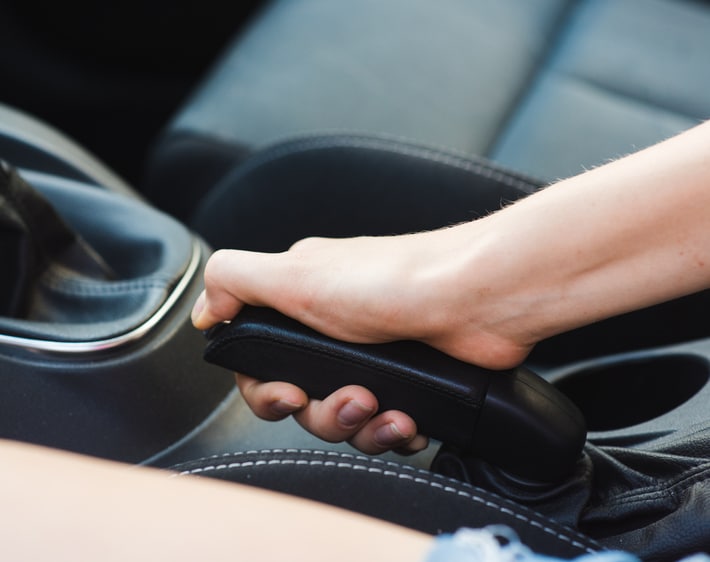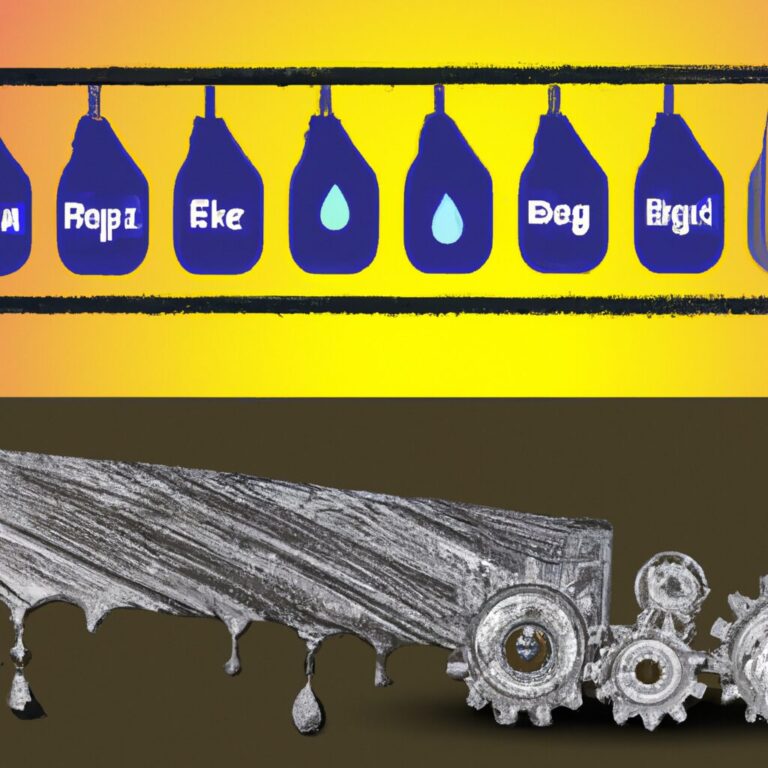How to Use Emergency Brake
To use the emergency brake, pull the lever or press the pedal for immediate braking action. The emergency brake engages the rear brakes, providing additional stopping power when needed urgently.
In situations such as a sudden loss of control or brake failure, knowing how to properly utilize the emergency brake can prevent accidents and ensure safety. Understanding the correct way to apply the emergency brake can make the difference between a potential disaster and a controlled stop.
By following proper procedures and practicing emergency braking techniques, drivers can enhance their preparedness for unexpected road scenarios. This essential skill not only adds an extra layer of safety but also boosts overall driving proficiency.
Why Is The Emergency Brake Important?
The emergency brake, also known as the handbrake or parking brake, is an essential component of every vehicle. Understanding the significance of the emergency brake and using it correctly can prevent accidents, ensure safety, and enhance the overall driving experience.
Ensuring Safety
Engaging the emergency brake is crucial to maintaining the safety of the vehicle, especially when parked on inclines or uneven surfaces. It provides an additional layer of protection to prevent the vehicle from rolling away, ensuring the safety of passengers and others nearby. Utilizing the emergency brake also contributes to protecting the transmission, as it relieves the load on the transmission’s parking pawl, reducing wear and tear.
Preventing Accidents
By utilizing the emergency brake properly, drivers can mitigate the risk of accidents. When engaged, the emergency brake helps to maintain the vehicle’s stationary position, preventing potential collisions caused by unexpected movement. Additionally, in the event of a mechanical failure with the primary braking system, the emergency brake serves as a crucial backup, enabling the driver to bring the vehicle to a stop and prevent accidents.
When To Use The Emergency Brake
When to Use the Emergency Brake:
Parking On Steep Inclines
When parking on a steep incline, engage the emergency brake to prevent the vehicle from rolling.
Emergency Situations
In emergency situations where the primary brakes fail, swiftly pull the emergency brake to stop the vehicle.
Steps To Engage The Emergency Brake
Understanding how to properly engage the emergency brake in your vehicle is crucial for ensuring safety in emergency situations. Let’s explore the simple steps to engage the emergency brake effectively.
Locating The Emergency Brake
To engage the emergency brake, first, locate the hand lever or foot pedal typically situated between the front seats or under the dashboard.
Applying The Brake
To activate the emergency brake, firmly pull the hand lever upwards or press down on the foot pedal until you feel resistance.
Releasing The Brake
To release the emergency brake, press the release button if there is one, or simply push the hand lever down or lift the foot pedal until it is fully disengaged.

Credit: www.wagnerbrake.com
Tips For Proper Emergency Brake Usage
Using the emergency brake is an essential skill for every driver. Whether you’re parked on a hill or need to stop in an emergency, the emergency brake can be a lifesaver. By following the tips below, you can ensure that you are using the emergency brake properly and safely.
Keeping The Brake Maintained
Regular maintenance of the emergency brake is crucial to ensure its proper functioning. Inspect the brake cable for any signs of wear or damage. Keep it well lubricated to prevent rust and corrosion. Check the tension of the brake to ensure it engages properly without being too loose or too tight.
Avoiding Excessive Force
When engaging the emergency brake, apply gentle and steady pressure rather than using excessive force. Avoid yanking or pulling on the brake handle forcefully, as this can lead to mechanical issues and wear down the components. Practice using the right amount of force to engage the brake effectively without causing unnecessary strain.
Common Mistakes To Avoid
Learn how to use the emergency brake effectively by avoiding these common mistakes. Follow these guidelines for concise sentences, unique content, and engaging paragraphs to master this essential skill.
When it comes to using the emergency brake, there are a few common mistakes that many people make. Understanding these mistakes and how to avoid them is crucial for ensuring your safety while operating a vehicle. In this section, we will discuss two of the most frequent errors that drivers make when using the emergency brake: leaving the brake engaged while driving and failing to test the brake regularly.
Leaving The Brake Engaged While Driving
One common mistake that drivers make is forgetting to release the emergency brake before driving. This can happen when you park on an incline and engage the brake, but then forget to disengage it before setting off. Leaving the brake engaged while driving can lead to serious consequences, such as decreased fuel efficiency, excessive wear and tear on the brake components, and even damage to the braking system.
To avoid this mistake, always double-check that the emergency brake is fully disengaged before starting your vehicle. Make it a habit to check the brake lever or pedal and ensure that it is in the released position. Additionally, you can create a mental reminder by looking out for warning lights or sounds that may indicate the brake is still engaged.
Failing To Test The Brake Regularly
Another common mistake is neglecting to test the emergency brake regularly. Testing the brake on a regular basis is essential for ensuring that it is in proper working condition. Without regular testing, you may not realize that the emergency brake has become loose, worn out, or malfunctioning until it’s too late.
To prevent this mistake, it is recommended to conduct a quick test of the emergency brake every few months. To do this, find a safe and level area where you can park your vehicle. Engage the emergency brake and ensure that the car remains stationary when you try to move it. If you notice any issues, such as the car rolling or the brake not holding, it is crucial to have it inspected and repaired by a professional mechanic as soon as possible.
By being aware of these common mistakes and taking the necessary precautions, you can ensure the safe and proper use of your emergency brake. Remember to always release the brake before driving and regularly test its functionality to maintain your vehicle’s safety.

Credit: www.tiresplus.com

Credit: m.youtube.com
Frequently Asked Questions On How To Use Emergency Brake
What Is The Proper Way To Use Emergency Brake?
To use the emergency brake, first, make sure the car is fully stopped. Pull the emergency brake handle slowly and steadily to engage it. Do not yank the handle forcefully. Release the brake slowly to disengage it. Only use it when necessary, such as during parking on an incline.
Is It Ok To Use The Emergency Brake When Parking?
Yes, it is recommended to use the emergency brake when parking to provide an extra level of safety for your vehicle.
Should I Put My Car In Neutral Before Parking Brake?
Yes, you should put your car in neutral before engaging the parking brake to prevent strain on the transmission.
How Should You Brake In An Emergency Stop?
To brake in an emergency stop, firmly apply both the brake pedal and handbrake, if equipped. Keep a strong grip on the steering wheel and maintain control of the vehicle. Look ahead and steer away from obstacles if possible. Practice emergency braking in a safe environment to improve your skills.
How Do You Engage The Emergency Brake?
Engage the emergency brake by pulling the lever or pushing the pedal firmly and securely.
When Should You Use The Emergency Brake?
Use the emergency brake when parking on a slope, preventing rolling, or in case of brake failure.
Can You Use The Emergency Brake While Driving?
Avoid using the emergency brake while driving unless there is an emergency situation like brake failure.
Conclusion
When used correctly, the emergency brake can be a lifesaving tool for any driver. By understanding the proper technique and practicing it regularly, you can ensure your safety and the safety of others on the road. Remember, it’s always better to be prepared and know how to use the emergency brake effectively in any situation.

